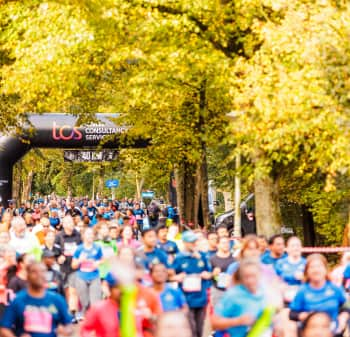
What is World Athletics?
The global institution that governs athletics
Behind incredible performances, legendary marathons, and record-breaking feats, there's a crucial institution working behind the scenes: World Athletics. For running enthusiasts, this name often pops up, sometimes at the bottom of result tables and sometimes at the center of discussions about the certification of new records. But what exactly is this logo we see everywhere? World Athletics is the organization that governs global athletics 🌎. Established in 1912 under the name IAAF (International Association of Athletics Federations), it was rebranded as World Athletics in 2019. Its primary mission is to oversee, develop, and promote the sport of athletics across all continents. However, contrary to what its name might suggest, this federation doesn't just focus on track events 🎽. Far from it.
From Track to Road, World Athletics Oversees All International Competitions
World Athletics covers all athletic disciplines 🎽:
- track racing,
- field events (jumps, throws),
- racewalking,
- road racing,
- cross-country running,
- mountain running and trail running.
It is also the body that manages official marathon records, half marathon, 10 km road races, and more, achievements that excite runners. It is especially the leading authority when it comes to ensuring the regularity, safety, and transparency of international competitions. Whether you're an elite athlete or an amateur runner, it is World Athletics that tracks records, sets rules, and validates times ⏱️ at major competitions. It also supports anti-doping efforts and handles all governance around professional competitions. Its mission: to make athletics in all its forms a sport that's cleaner, more structured, more accessible, and even more popular 🎉.
World Athletics: A Global Organization with Local Roots
With its 214 national federations and headquarters in Monaco 🇲🇨, World Athletics operates on a global scale. Led by Sebastian Coe, a former British athlete 🇬🇧 and a two-time Olympic middle-distance champion, as well as the former head of the London 2012 Olympic Committee 🥇, the organization is run daily by a team of a hundred collaborators. Their clear objective: to grow athletics globally. This work also involves constant coordination with local federations, as evidenced by the creation of an annual World Athletics racing calendar in 2023 📅. This calendar includes officially recognized races, allowing athletes to achieve performances that qualify them for international events, like the Olympics, through a points system (also known as ranking).
A Mission Beyond Just Timing
World Athletics' ambition isn't just to time races ⏱️. It's also to protect the sport, support its athletes, and foster its development in underserved regions. The organization works on several fronts:
- It organizes top-tier events (World Championships, Wanda Diamond League, etc.). It manages regulations, official rankings, and anti-doping procedures alongside the World Anti-Doping Agency and the Athletics Integrity Unit.
- It develops programs to train coaches, officials, and local clubs.
- It aims to connect more with the public, especially through social media 📱, public events, etc.
There's also a sustainability aspect to the institution's strategy. In 2020, it launched a specific action program aimed at leveraging sport to drive climate action and societal change. In collaboration with the United Nations Environment Programme, World Athletics advocates for more sustainable practices, especially through campaigns about air pollution and plastic waste. This reminds us that sports, particularly outdoor ones, have a role to play in addressing major global challenges. The organization's efforts also have significant social implications, with projects focused on justice, gender equality, poverty alleviation, and combatting hunger.
World Athletics Labels: A Mark of Quality for Road Races
In the running world, you'll often come across renowned labels: Platinum Label, Gold Label, Elite Label... These aren't just decorative badges. These official labels awarded by World Athletics to race organizers ensure that the race meets specific standards (accurately measured routes, safety, participant level, anti-doping measures, prizes for winners, etc.). Here are the four current levels:
- World Athletics Platinum Label (also called Platinum): the crème de la crème. It hosts top global athletes, offers a quality runner experience, TV broadcasting, exemplary safety, fast times. Often associated with marathons like the World Marathon Majors or similar events.
- World Athletics Gold Label: very well-organized races with high standards in course layout, prize money, performance, and race conditions.
- World Athletics Elite Label: esteemed and recognized races, often more local or emerging internationally.
- World Athletics Label: the first level of recognition, certifying that a race meets World Athletics' minimum quality and integrity standards.
World Athletics in Summary
World Athletics is somewhat like the quiet yet essential conductor of the athletic world 🎽, the cornerstone of running. A global institution that ensures the sport remains clean, fair, and well-organized, while also fostering its growth wherever possible. For running enthusiasts, it's mainly a benchmark. When a race is labeled by World Athletics, it often signifies seriousness, rigor, and thus performance potential. In a constantly evolving world, the organization keeps an eye on the future. It is already envisioning new competitions to better support athletes and offer ever more entertainment to fans. This suggests that the future of running promises to be even more spectacular 🌟.
This could also be of interest to you
A next-gen platform helping sports enthusiasts of all levels discover territories and heritage through races tailored to them.
Made in France, between Lyon and Nantes




